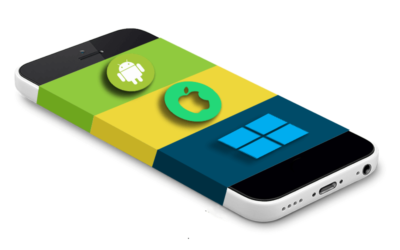Cloud Computing: The Revolution
“There has been a lot of debate about what the cloud is. Many people think of the cloud as a collection of technologies. It’s true that there is a set of common technologies that typically make up a cloud environment, but these technologies are not the essence of the cloud. The cloud is actually a service or group of services. This is partially the reason that the cloud has been so hard to define. Originally, the cloud was thought of as a bunch of combined services, technologies, and activities. What happened inside the cloud was not known to the users of the services. This is partially how the cloud got its name. But that definition has since changed. Providers have realized that although some users won’t care about what is going on behind the scenes, many actually do care. This user interest prompted providers to be more forthcoming about what they are doing. In many cases, customers are even allowed to configure their own system monitoring solutions.”(Rountree, Derrick, and Ileana Castrillo, 2013)
Cloud Computing Service Models
- Software as a Service: CRM, Email, Games
- Platform as a Service: Web Server, Development Tools
- Infrastructure as a Service: Virtual Machines
“Cloud computing is revolutionizing the way software is built and delivered. We are in a paradigm shift, moving away from a legacy model where we buy and control infrastructure and build or buy software to a new world where we consume everything as services. It is critical that managers and architects fully understand the pros and cons of cloud computing, the definitions of each cloud service model, and the definitions of each cloud deployment model. When leveraged properly, cloud computing can bring an organization unprecedented agility and greatly reduced costs while connecting the organization to a global collection of services.” (Kavis, Michael J., 2014)
Conclusion:
Cloud Computing is a major revolution to the digital age, it provides major solutions to computing of organizations from large to small and individuals. Cost Savings, Security, Disaster Recovery amongst others. It is necessary to move with the revolution and embrace Cloud Computing
Refrence:
Rountree, Derrick, and Ileana Castrillo. Basics of Cloud Computing : Understanding the Fundamentals of Cloud Computing in Theory and Practice, Elsevier Science & Technology Books, 2013. ProQuest Ebook Central, http://ebookcentral.proquest.com/lib/salford/detail.action?docID=1115176.
Created from salford on 2019-10-11 04:54:31.
Kavis, Michael J.. Architecting the Cloud : Design Decisions for Cloud Computing Service Models (SaaS, PaaS, and IaaS), John Wiley & Sons, Incorporated, 2014. ProQuest Ebook Central, http://ebookcentral.proquest.com/lib/salford/detail.action?docID=1605593.
Created from salford on 2019-10-11 05:15:40.
Theoretical Papers
Theoretical Paper 2: EXPERIENCING MOBILE LIBRARIES The design and implementation of a Mobile Library APP system
Paper Title: EXPERIENCING MOBILE LIBRARIES The design and implementation of a Mobile Library APP system Paper Title: EXPERIENCING MOBILE LIBRARIES The design and implementation of a Mobile Library APP system Authors: Ying-Hung Pu and Po-Sheng Chiu Department of...
Theoretical Paper 1: Customer engagement, buyer-seller relationships, and social media
Paper Title: Customer engagement, buyer-seller relationships, and social media Paper Title: Customer engagement, buyer-seller relationships, and social media Authors: C.M. Sashi Department of Marketing, Florida Atlantic University, Boca Raton, Florida, USA Management...
White Papers
White Paper 2: EFFECTIVE SOCIAL MEDIA MARKETING STRATEGIES
Paper Title: EFFECTIVE SOCIAL MEDIA MARKETING STRATEGIES Paper Title: EFFECTIVE SOCIAL MEDIA MARKETING STRATEGIES Authors: Andrew Kucheriavy https://cdn2.hubspot.net/hubfs/439788/Content_Offers/51-Social_Media/Effective_Social_Media_Marketing_Strategy.pdf ...
White Paper: Enterprise Mobile App Development Best Practices
White Paper: Enterprise Mobile App Development Best PracticesEnterprise Mobile App Development Best Practices By Nitin Bhatia This Paper was well written to meet the future of Technology talking about the Web 3.0 Generation, The author made it clear that...


